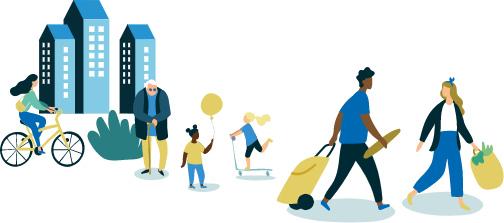Passengers are people first, and they have busy lives. They generally don’t travel because they love riding a bus or train. They travel to do the things they need or want to do.
The destination is their motivation and they want the journey to be effortless on their way to work, a show, a football game, the airport, or wherever else they’re headed. And the truth is that, if taking public transport makes getting to the final destination cumbersome, or frustrating, they’re likely to drive a car instead next time.
Today, not all public transportation is working for passengers. There are many points of friction that must be addressed to make it the first choice for effortless journeys.
Four scenarios where public transit creates frustrations
Pierre is joining his friends in a bar. He doesn’t want to be late. He purchases his bus ticket on his mobile and heads to the bus stop. The bus will get him to the pub five minutes early. Unfortunately, that bus never shows up and he will wait 20 minutes for the next one, which means he will have less time with his friends.
The best part of Beau’s day is her 20 minute bike ride to pick up groceries after work. Her bike was stolen and she hasn’t bought a new one because her apartment doesn’t have storage. Beau uses the city bikes and when Beau walks to the pick up point, they’re all gone due to a holiday weekend and an influx of tourists. On the walk to the car, she wishes she could have booked the bike ahead of time.
Julia takes the bus to work each morning. At the end of the month, she checks her credit card balance to make a payment and notices her bus fees didn’t include her concession. She spends half an hour on a call with the public transportation department only to find she has to call a third party provider that handles their payments. After another hour, she decides driving will be a better use of her time in the future.
Antonio and his extended family are visiting the city. Everyone is excited to go to a famous art history museum. There are 12 family members, so they take a bus so they can all ride together. When the bus they’re planning to take arrives, it can only fit another 6 people. The bus after that can only fit 4. The third group lags far behind the rest of the group and gets less time at the museum.
Public transit often asks too much of passengers
86% of Europeans want to change their daily consumption to protect the environment and 77% of Europeans are within 10 minutes of a station or stop. When public transport is as accessible as this, the main issues holding many people back from choosing public transit over a car are the price of trips or the hassle involved.
If cities can offer a simple planning and travel experience, opting for public transit becomes an easy, sustainable part of their day-to-day lives.
Each of the scenarios above highlight a point of friction in public transit. When the bus never shows up, the public transit is at maximum capacity, or there is an incorrect charge, cities sabotage the trust of their commuters. Unfortunately, there are a lot of places where trust can erode; starting with ticketing.
Transit tickets can be purchased in many ways – in advance, at a station, on-board a vehicle, or using an app or website. Or pay-as-you-go using a bank card, smartphone, or pre-loaded transit smart card as your ‘ticket to ride’. If any of these ticketing and payment options add friction or frustration to the passenger experience, it can trigger more ‘downvotes’ for public transport – and perhaps more people trading public transport for car trips.
Sometimes, the mental gymnastics of public transit ticketing can be overwhelming for the rider, as they ask themselves questions like:
- Which is the right app to download?
- How can I book in advance?
- Can I see capacity in advance?
- Have I got the best value ticket for the different legs of my journey?
- How can I get a concessionary rate?
- Do I need my phone charged up and switched on?
- What does an inspector need to see?
The less familiar a commuter is with the mode of transportation, and the more questions they have to answer, the higher their anxiety. If the rider has previously had a bad experience, that can add to the anxiety, too. To alleviate these concerns, the ideal transit ticketing experience would require little to no preparation or forethought. Riders could just turn up, sit down, and move towards their destination.
How can cities improve the passenger experience?
Technology, like the solutions provided by Flowbird, helps cities create the seamless experience riders want. Below are two ways to make the passenger experience better, which can increase ridership and the overall sustainability of your city.
1. Provide seamless payment options
Julia needs to know that her card will apply the correct amount to her fare each time she boards the bus – and she isn’t the only one.
Payment choices must provide accessibility for all. Pre-pay options, like topping up a transport card, or buying a ticket in advance make public transportation accessible for those who use cash. But these methods do involve friction and place the onus on the passenger to figure out their journey beforehand.
Most people would rather not try to join the dots between tickets, fares, and their journeys every time they ride. They’d rather just go. And that’s possible when they have the option to tap or scan their smart watch, phone, or card on a reader to access transport, and the transport provider calculates the correct charge.
With this kind of ticketing, as provided through Flowbird’s account-based ticketing and open payments, passengers will always pay the correct and best-value fare, with concessions and any daily, weekly or monthly fare caps automatically applied. In the near future, passengers will also be able to put their phone in ‘transit’ mode, so their phone will still tap a validator even when it’s out of battery.
With Flowbird, you can lean on our expertise here. We’re a long time provider of account-based ticketing and open payments, with solutions across the globe from Perth, Australia to Helsinki, Finland and Edinburgh in Scotland.
2. Use a centralised hub of information
Flowbird has been reducing barriers to transit by providing effortlessly accessible ticketing information and journey planning. A passenger can use a City app driven by Flowbird’s white-label MaaS app to find out their best options for travelling using different transport modes.
Flowbird apps can evolve into a full scale Mobility-as-a-service (MaaS) system that provides information like bus ridership capacity, bespoke accessibility information, and even enables citizens and tourists to pay for city parking, bikes, buses, trains, e-scooters and bikes with a single account.
Anonymised app data containing journey details and customer preferences helps transport authorities to improve the passenger experience. Since these improvements will be based on real passenger habits, rather than the assumptions and expensive intermittent surveys, the improvements are more targeted and likely to result in an increase of frequent riders and new users.
While the future of public transportation is complex, it’s not hard to determine our next steps. Riders’ habits are already telling us everything they want, and need, to choose public transportation for their journeys.
To see more examples of how we’ve partnered with operators and cities to serve passengers, see how we eliminated queues for tickets and made transport simple in Amiens, or how we created an all-in-one Mobility-as-a-Service solution for Monaco.

 International
International  Flowbird Systems Go Live in Madeira
Flowbird Systems Go Live in Madeira  The next poster cities for mobility
The next poster cities for mobility  What politicians and policy makers need to know about MaaS
What politicians and policy makers need to know about MaaS  MaaS start small and scale up
MaaS start small and scale up  Flowbird Pay-by-Plate Pay Stations Launch in the City of New York
Flowbird Pay-by-Plate Pay Stations Launch in the City of New York  Lyon chooses Flowbird for the implementation of its new progressive parking policy
Lyon chooses Flowbird for the implementation of its new progressive parking policy  Is MaaS an essential foundation for liveable cities?
Is MaaS an essential foundation for liveable cities? 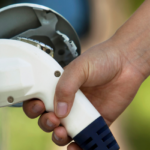 Wyre Forest District Council car parks to have electric vehicle (EV) chargers installed
Wyre Forest District Council car parks to have electric vehicle (EV) chargers installed 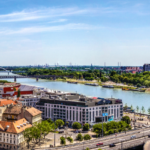 Flowbird Supplies 500 Pay and Display Parking Meters in Bratislava!
Flowbird Supplies 500 Pay and Display Parking Meters in Bratislava!  MaaS: What cities need to do to make it work
MaaS: What cities need to do to make it work 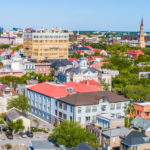 Charleston, SC Updates Its Parking System with Effortless Digital Solutions
Charleston, SC Updates Its Parking System with Effortless Digital Solutions  Clearwater, Florida Launches Pay by Text Solution – No App or Account Required
Clearwater, Florida Launches Pay by Text Solution – No App or Account Required  Carlisle, PA To Update Its Parking System with User-Friendly Solution in 2024
Carlisle, PA To Update Its Parking System with User-Friendly Solution in 2024  Open Payments Launched In Toulouse – Contactless Card Validation!
Open Payments Launched In Toulouse – Contactless Card Validation!  Flowbird and Semitan join forces to make mobility effortless!
Flowbird and Semitan join forces to make mobility effortless!  Meet the Team: David Thompson
Meet the Team: David Thompson 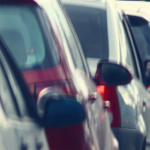 Solving traffic flow – what politicians and policymakers need to know
Solving traffic flow – what politicians and policymakers need to know 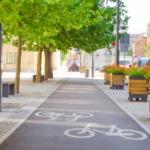 The future of the roadside curb
The future of the roadside curb 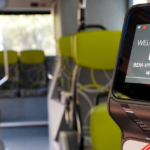 The future of the passenger experience and why effortlessness is the key
The future of the passenger experience and why effortlessness is the key 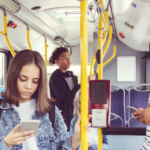 A guide to your city’s passengers: What you need to know
A guide to your city’s passengers: What you need to know 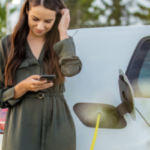 The 4 roadblocks in your city’s e-mobility plan
The 4 roadblocks in your city’s e-mobility plan 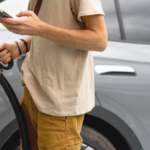 The road to zero-emissions cities (and, the parking when we get there)
The road to zero-emissions cities (and, the parking when we get there)  Why wait to decarbonise our regions?
Why wait to decarbonise our regions? 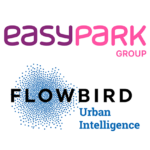 Flowbird Group takes a step forward in reshaping mobility through a strategic acquisition by EasyPark Group
Flowbird Group takes a step forward in reshaping mobility through a strategic acquisition by EasyPark Group  Park&Charge: Meet our expert
Park&Charge: Meet our expert 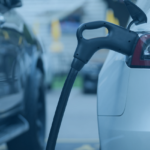 Flowbird gives cities a fast-track to e-mobility readiness
Flowbird gives cities a fast-track to e-mobility readiness 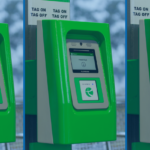 Coming soon to Perth: ‘tap to ride’ with your bank card or device
Coming soon to Perth: ‘tap to ride’ with your bank card or device  What’s next after open-loop transit payments?
What’s next after open-loop transit payments?  What would motivate you to use your car less?
What would motivate you to use your car less? 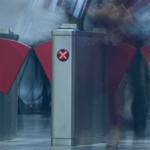 How to Boost the Efficiency of Fare Collection
How to Boost the Efficiency of Fare Collection 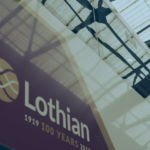 Lothian Buses new record: 100,000 taps in a day!
Lothian Buses new record: 100,000 taps in a day! 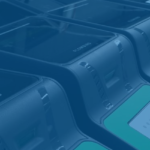 Smart Transport Ticketing: Benefits for Operators and Passengers
Smart Transport Ticketing: Benefits for Operators and Passengers 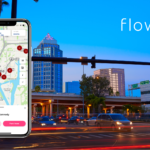 Flowbird App Empowers Tampa’s Parking Experience with Multi-App Integration
Flowbird App Empowers Tampa’s Parking Experience with Multi-App Integration  Meet the team: Justin Pounder
Meet the team: Justin Pounder 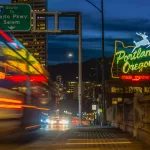 Flowbird, Umojo Partner for Off-Street Solution in Portand
Flowbird, Umojo Partner for Off-Street Solution in Portand 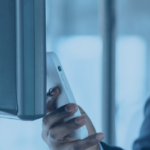 Cash versus digital payments in mobility systems
Cash versus digital payments in mobility systems  Flowbird teams up with Zuora to advance digitalisation and growth
Flowbird teams up with Zuora to advance digitalisation and growth  Flowbird app & Pay by Text now available in Sewickley!
Flowbird app & Pay by Text now available in Sewickley!  FabMob and Flowbird lead the way for accessible, sustainable mobility
FabMob and Flowbird lead the way for accessible, sustainable mobility  Passenger apps: Take 5 operator benefits
Passenger apps: Take 5 operator benefits 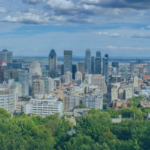 Contactless Interac Debit fare payments launch on Laval buses
Contactless Interac Debit fare payments launch on Laval buses  Edinburgh tramline extended to provide a route across the city
Edinburgh tramline extended to provide a route across the city  Take 5… Transport authority benefits of Account Based Ticketing
Take 5… Transport authority benefits of Account Based Ticketing  Parkex | Birmingham | 2023
Parkex | Birmingham | 2023  Flowbird Partners with the City of Minneapolis to Launch New & Improved MPLS Parking App
Flowbird Partners with the City of Minneapolis to Launch New & Improved MPLS Parking App 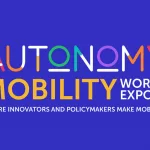 Flowbird presents its vision for connected urban mobility at AMWE in Paris
Flowbird presents its vision for connected urban mobility at AMWE in Paris 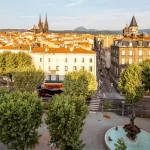 Clermont Ferrand makes the move to open payments on transport
Clermont Ferrand makes the move to open payments on transport 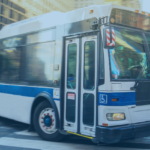 Flowbird’s transport talking points at Transport Ticketing Global
Flowbird’s transport talking points at Transport Ticketing Global 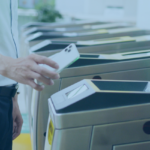 Take 5… Operator benefits of open payments in transport
Take 5… Operator benefits of open payments in transport 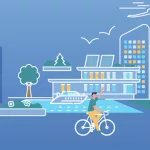 Flowbird envisions the transport ticket of tomorrow
Flowbird envisions the transport ticket of tomorrow  Ticketing & payments – a vital enabler of National Bus Strategy
Ticketing & payments – a vital enabler of National Bus Strategy 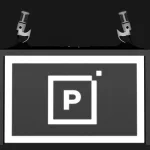 Flowbird announce new additions to the management team further to accelerate growth ambitions within the UK parking sector
Flowbird announce new additions to the management team further to accelerate growth ambitions within the UK parking sector  New London Brings Additional Convenience Parkers with Flowbird App
New London Brings Additional Convenience Parkers with Flowbird App  Podcast: Will transport payments drive a MaaS revolution?
Podcast: Will transport payments drive a MaaS revolution?  Take 5… Passenger benefits of open payments on transport
Take 5… Passenger benefits of open payments on transport  South Orange Parking Authority Updates Its Parking System with User-Friendly Solution
South Orange Parking Authority Updates Its Parking System with User-Friendly Solution 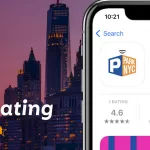 New ParkNYC App Proves to be Unrivaled Success in First 30 Days
New ParkNYC App Proves to be Unrivaled Success in First 30 Days 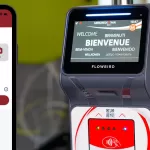 Monapass – One App, One Account, for Open Ticket Mobility
Monapass – One App, One Account, for Open Ticket Mobility 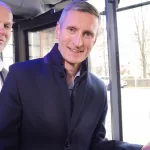 Translink Milestone for National Account Based Ticketing System for Northern Ireland
Translink Milestone for National Account Based Ticketing System for Northern Ireland  Flowbird Announces New CEO
Flowbird Announces New CEO  Flowbird unveils Off-Street Solution at IPMI 2022
Flowbird unveils Off-Street Solution at IPMI 2022  Flowbird is featured in the “Ticketing in Mobility as a Service” handbook published by UITP & STA
Flowbird is featured in the “Ticketing in Mobility as a Service” handbook published by UITP & STA  Flowbird Group acquires Your Parking Space
Flowbird Group acquires Your Parking Space  Transport Ticketing Global | London | 2022
Transport Ticketing Global | London | 2022 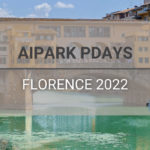 AIPARK Pdays | Florence | 2022
AIPARK Pdays | Florence | 2022 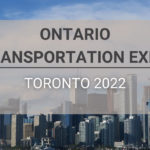 Ontario Transportation Expo | Toronto | 2022
Ontario Transportation Expo | Toronto | 2022 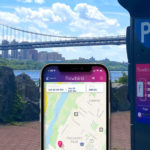 Flowbird Implements Automated Parking System To Palisades Interstate Parks
Flowbird Implements Automated Parking System To Palisades Interstate Parks  Smart City Forum | Warsaw | 2022
Smart City Forum | Warsaw | 2022 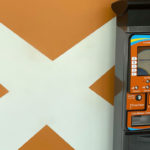 Birmingham Jefferson County Transit Authority Partners with Flowbird
Birmingham Jefferson County Transit Authority Partners with Flowbird  PARKEX | Birmingham | 2022
PARKEX | Birmingham | 2022 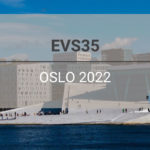 EVS35 | Oslo | 2022
EVS35 | Oslo | 2022 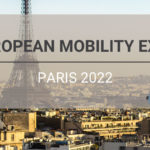 European Mobility Expo | Paris | 2022
European Mobility Expo | Paris | 2022  Konferencja SPP | Grudziądz | 2022
Konferencja SPP | Grudziądz | 2022  Svepark Conference | Gävle | 2022
Svepark Conference | Gävle | 2022  Milipol Qatar 2022
Milipol Qatar 2022 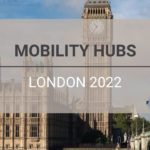 Mobility Hubs | London | 2022
Mobility Hubs | London | 2022  MILIPOL Qatar | Doha | 2022
MILIPOL Qatar | Doha | 2022 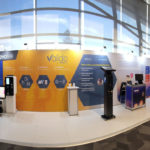 A look back at the PACE 2022
A look back at the PACE 2022  Thank you for visiting us at Intertraffic Amsterdam
Thank you for visiting us at Intertraffic Amsterdam 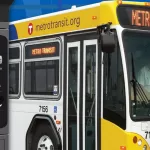 Flowbird Group to Expand Off-Board Fare Payments for Metro Transit
Flowbird Group to Expand Off-Board Fare Payments for Metro Transit 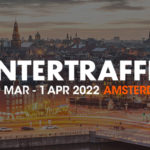 Intertraffic | Amsterdam | 2022
Intertraffic | Amsterdam | 2022 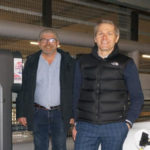 Flowbird completes first ever local authority Electric Vehicle charge point project for Wokingham Borough Council
Flowbird completes first ever local authority Electric Vehicle charge point project for Wokingham Borough Council  Podcast: the rise of open payments in transport
Podcast: the rise of open payments in transport 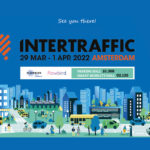 See you soon at Intertraffic Amsterdam 2022!
See you soon at Intertraffic Amsterdam 2022!  Flowbird is excited to share with you the latest news about Hong Kong!
Flowbird is excited to share with you the latest news about Hong Kong! 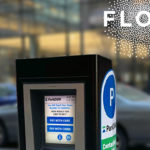 City of Des Moines upgrades to smart multi-space technology with Flowbird Group
City of Des Moines upgrades to smart multi-space technology with Flowbird Group 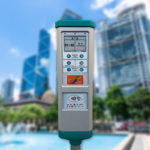 Flowbird trusted by HKT for their Smart City program
Flowbird trusted by HKT for their Smart City program 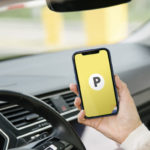 Flowbird announces a licensing agreement with Concar
Flowbird announces a licensing agreement with Concar 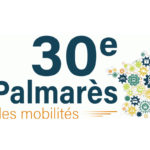 Mobility Awards City Rail & Transport
Mobility Awards City Rail & Transport  A great strategic win in Hamburg
A great strategic win in Hamburg 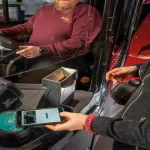 Lothian Adopts Weekly Capping with Support from Flowbird
Lothian Adopts Weekly Capping with Support from Flowbird 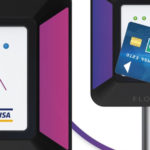 Tisséo, Flowbird and CIC deploy Open Payment in Toulouse
Tisséo, Flowbird and CIC deploy Open Payment in Toulouse 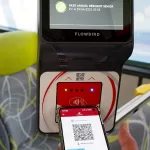 International Spotlight falls on MaaS in Monaco
International Spotlight falls on MaaS in Monaco 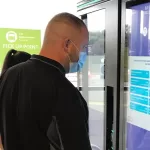 Northern Completes Major UK On-Station Rail Retailing Rollout
Northern Completes Major UK On-Station Rail Retailing Rollout  Flowbird Transforms Urban Mobility in Monaco
Flowbird Transforms Urban Mobility in Monaco 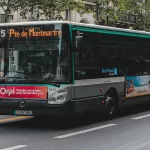 Conduent Transportation and Flowbird Selected to Equip Paris Ile-de-France Mobilités’ Buses and Trams with Next-Generation Onboard Ticketing Platform
Conduent Transportation and Flowbird Selected to Equip Paris Ile-de-France Mobilités’ Buses and Trams with Next-Generation Onboard Ticketing Platform  Flowbird’s Open Payments Expertise Wins Innovation Award
Flowbird’s Open Payments Expertise Wins Innovation Award  STL teams up with Flowbird and other new business partners to deliver a Québec First ― Next-generation credit card payment solution on all Laval buses
STL teams up with Flowbird and other new business partners to deliver a Québec First ― Next-generation credit card payment solution on all Laval buses 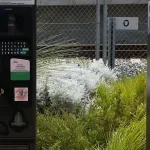 Flowbird Extends Ticketless Parking Across Transperth SmartRider Network
Flowbird Extends Ticketless Parking Across Transperth SmartRider Network 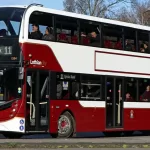 One million ‘taps’…and counting
One million ‘taps’…and counting 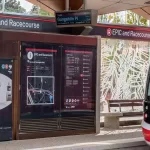 Canberra Launches Smart City Light Rail Network with Flowbird Technology
Canberra Launches Smart City Light Rail Network with Flowbird Technology 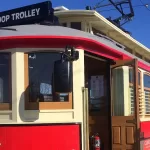 Flowbird Releases Mobile Ticketing App – ‘Loop Trolley’ App is Now Live in St. Louis, Missouri
Flowbird Releases Mobile Ticketing App – ‘Loop Trolley’ App is Now Live in St. Louis, Missouri 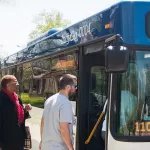 IndyGo Partners with Flowbird to Modernise Fare Collection System
IndyGo Partners with Flowbird to Modernise Fare Collection System 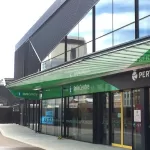 Transperth Extends Partnership with Flowbird Transport Intelligence
Transperth Extends Partnership with Flowbird Transport Intelligence 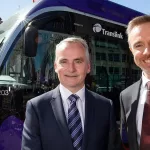 World-class ticketing system glides into Belfast
World-class ticketing system glides into Belfast 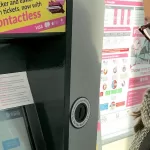 Edinburgh Trams Taps into Contactless Benefits
Edinburgh Trams Taps into Contactless Benefits 